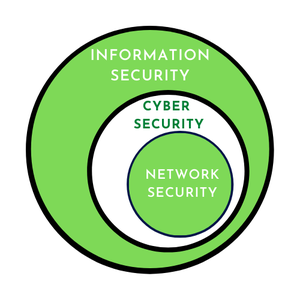What Are the Responsibilities of a Security Operations Center Team?
A security operations center (SOC) is essential for any organization in today’s data-driven world. A SOC is a group of cybersecurity experts responsible for monitoring and protecting an organization’s networks and information.
SOC teams play a critical role in keeping organizations secure. This article will discuss the SOC framework, how a SOC works, and the responsibilities of the various members of a SOC team.
What Is a Security Operations Center?
A SOC is comprised of specialized professionals trained in cybersecurity. Members of a SOC team may have education and experience in fields such as IT, computer science, and engineering.
While it’s not necessary for all members of a SOC to have a deep understanding of every aspect of cybersecurity, they should have a well-rounded working knowledge of the basics, since they are responsible for identifying and mitigating threats and responding to security incidents.
Job Roles in a Security Operations Center
A SOC team typically includes the following roles:
◉ Security analysts monitor the organization’s networks and systems for signs of security threats. They investigate any suspicious activity and take action to mitigate it.
◉ Incident responders are tasked with reacting to security incidents. They work with security analysts to identify and resolve any issues that arise.
◉ Systems administrators are responsible for maintaining the organization’s infrastructure by ensuring that all systems are running smoothly and securely.
◉ Network engineers are responsible for network infrastructure design, implementation, and troubleshooting.
What Are the Main Functions of a Security Operations Center?
The SOC framework is designed to help SOC teams effectively monitor and defend their organization’s networks and data. The main functions of a SOC team are as follows:
◉ Monitoring. SOC analysts monitor the organization’s networks and systems for signs of security threats. They look for any suspicious activity and take action to mitigate it.
◉ Threat intelligence. SOC analysts use threat intelligence to identify potential security threats. They track new threats and develop strategies to deal with them.
◉ Incident response. When a security incident occurs, the SOC team responds quickly and effectively to identify and resolve the issue.
◉ Security training. SOC analysts offer security awareness training for other staff members to protect the business from possible attacks (Koziol & Bottorff, 2021).
What Are the Benefits of Having a Security Operations Center Team?
In recent years, organizations have heavily invested in online software, tools, and databases, but with this digitization comes an increased demand for cybersecurity teams to protect these assets. As more and more confidential data points are exchanged online, cyber theft and malicious hacks have increased.
Having a group of individuals whose primary task is preventing cyberattacks is crucial for all organizations. SOC teams provide this protection and are an essential part of the security infrastructure for any organization that wants to keep its data safe.
With security such a significant concern in today’s digital environment, a dedicated SOC team is highly valuable to organizations. Here are some of the key benefits:
◉ Increased security. Businesses can strengthen their cybersecurity posture by having a team of experts dedicated to monitoring and protecting their networks and data.
◉ Reduced risk. A SOC can help reduce the risk of a security incident happening in an organization and mitigate damage if a breach does occur.
◉ Improved compliance. SOCs help organizations meet their compliance obligations by providing reports and evidence of their security measures.
◉ Reduced costs. Having a SOC can help organizations save money by reducing the number and severity of security incidents.
◉ Improved efficiency. A SOC can enhance the efficiency of an organization’s IT department by taking responsibility for cybersecurity and freeing up IT professionals to focus on other tasks.
By having a team of experts who can effectively monitor and respond to cyberthreats, businesses can reduce the number of security incidents they face. As data environments continue to become more complex, the need for knowledgeable SOC teams will only increase.
What Challenges Do Security Operations Centers Face Today?
SOCs have many responsibilities, and the SOC team can be easily overwhelmed if these issues are not properly managed. Some of the challenges faced by SOCs today include:
◉ Managing big data. SOCs are tasked with collecting and handling a vast amount of data (Kelley, 2022). This massive data can be a challenge for SOC teams, who may find it overwhelming to monitor and analyze.
◉ Keeping pace with new technologies. Cybersecurity is constantly evolving, and part of a SOC’s responsibility is to keep up with the latest changes in technologies and attack techniques to stay ahead of the curve.
◉ Finding qualified personnel. SOCs require a team of skilled analysts who can identify and mitigate security threats. Given the cybersecurity talent shortage, this can be difficult to find in today’s market (Li, 2021).
◉ The increasing complexity of data environments. The number of devices that an organization has on its network increases the complexity of the environment. As an organization scales, it becomes more challenging for SOC analysts to track and respond to security threats.
◉ The growing number of cyberattacks. The frequency of cyberattacks is increasing by the day, making it more difficult for SOCs to keep up.
Source: eccouncil.org



















